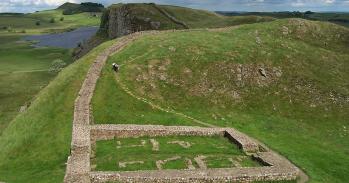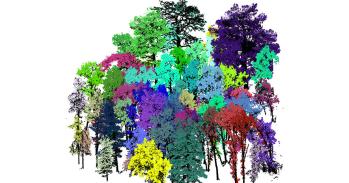
Researchers have found that pulse-like releases of carbon dioxide to the atmosphere are a pervasive feature of the carbon cycle and that they are closely connected to major changes in Atlantic Ocean circulation.
Researchers have found that pulse-like releases of carbon dioxide to the atmosphere are a pervasive feature of the carbon cycle and that they are closely connected to major changes in Atlantic Ocean circulation.
Understanding these centennial-scale changes is crucial because they operate at a similar pace to the anthropogenic changes altering our planet
Christoph Nehrbass-Ahles
Ice cores from Antarctica show that, in the span of less than two centuries, atmospheric levels of carbon dioxide jumped repeatedly at the end of the last ice age, when the Atlantic was continuously disturbed by melting ice sheets.
Whether these CO2 jumps might occur in today’s conditions, when we are already seeing the impact of human-driven CO2 emissions and rapidly melting polar ice sheets, has remained unknown.
The study, published in the journal Science and by researchers from the Universities of Cambridge, Bern and Grenoble Alpes, reveals that rapid CO2 jumps also occurred during a period from 450,000 to 330,000 years ago, a key time in Earth’s history covering more than a full glacial cycle.
“By looking back further in time, to previous glacial and interglacial conditions, we find the same CO2 jumps - irrespective of whether the climate was cold or warm,” said first author Dr Christoph Nehrbass-Ahles from Cambridge’s Department of Earth Sciences, who conducted the research while based at the University of Bern.
These rapid CO2 rises seem to be a common feature of the carbon cycle in the past. But, said Nehrbass-Ahles, human activities are releasing carbon a rate ten times faster than during CO2 increases in the past. “What is unclear is how a future jump in carbon may interact with or exacerbate anthropogenic carbon emissions,” he said.
Central to the team’s finding was their detailed analysis of Antarctic ice from the EPICA (The European Project for Ice Coring in Antarctica) Dome C ice core.
“Our previous understanding of rapid CO2 changes has been hampered by a lack of detailed data over this interval – so these events were often missed,” said Nehrbass-Ahles. Thanks to a new gas extraction method and detailed sampling campaign, the team was able to identify subtle changes occurring at centennial timescales.
The study marks an important step in understanding what causes such abrupt increases and possible feedbacks in the Earth’s climate system. “Scientists are uncertain as to the mechanism behind the CO2 jumps, but think a combination of factors, including ocean circulation, changing wind patterns, and terrestrial processes, are likely responsible,” said co-author Professor David Hodell, also from the Department of Earth Sciences.
The researchers combined the new ice core data with detailed information on ocean circulation from marine sediments collected off the coast of Portugal. The site, which was drilled as part of the International Ocean Discovery Program (IODP), is unique for its high accumulation of sediments and is ideally situated for monitoring the changes in ocean circulation triggered when ice sheets collapsed.
The isotopic signal of the marine sediments showed the same pattern as the ice cores. “The abrupt changes are clearly represented in both the marine and ice records, telling us that they must be connected to major changes in the surface and deep circulation of the Atlantic Ocean,” said Hodell.
According to Nehrbass-Ahles, the key is the high resolution of the ice and marine sediments records, making observations of these rapid changes in both records possible. “Understanding these centennial-scale changes is crucial because they operate at a similar pace to the anthropogenic changes altering our planet,” he said.
Reference:
C. Nehrbass-Ahles et al. ‘Abrupt CO2 release to the atmosphere under glacial and early interglacial climate conditions.’ Science (2020). DOI: 10.1126/science.aay8178

The text in this work is licensed under a Creative Commons Attribution 4.0 International License. Images, including our videos, are Copyright ©University of Cambridge and licensors/contributors as identified. All rights reserved. We make our image and video content available in a number of ways – as here, on our main website under its Terms and conditions, and on a range of channels including social media that permit your use and sharing of our content under their respective Terms.




